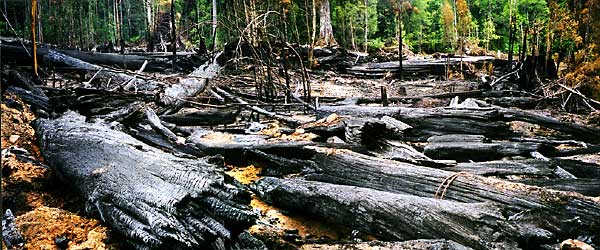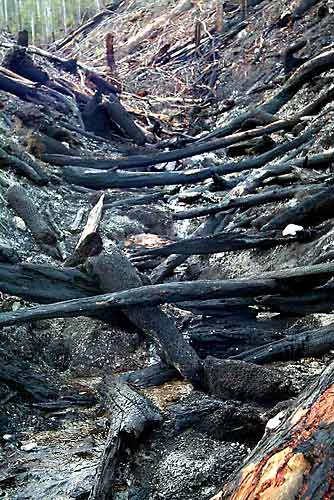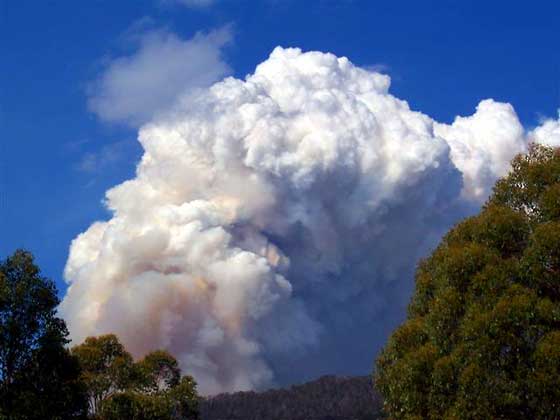|
WATER S.O.S TASMANIA - Carbon
|
|
|
|
|
|
|
|
|
In 2001 Forestry Tasmania conducted its own
research in Wet Forests at the Warra Long Term Ecological Research
Site in Southern Tasmania, the results of which were significant.
The amount of carbon released to the atmosphere after the re-generation
burn was between 154.1 and 226.4 tonnes per hectare---- an average
of 196.7 tonnes.
The study showed between 58 and 63% of the weight of organic
matter left on the ground and its carbon content, was lost to
the atmosphere after clearfelling and burning.
|
|
 |
|
Research has shown there can be as
much as 550 tonnes per hectare of fallen logs on the
forest floor of Mt Ash or mixed Wet Sclerophyll forests.
•
Ref: David Lindenmayer.
|
|
|
|
Research by the C.S.I.R.O. has indicated there
is a net loss of around 60% of carbon to the atmosphere as a
consequence of clearfelling and the conversion to short rotation
plantations or re-growth native mono-cultures. It would take
in excess of 500 years to recover the lost carbon and get carbon
stability back into catchments.
The organic carbon content of soils is reduced by at least
2/3 when undisturbed native forests are converted to plantations
or short term re-growth native mono-cultures, i.e. less than
50 years.
Planting trees to soak up carbon dioxide in the atmosphere has
been shown to be a scientific fallacy. Trees actually release
more carbon in the first 10 years of growth than they actually
absorb.
|
Ref: Tree Farms won’t
halt Climate Change. New Scientist 28 October 2002.
FULL
ARTICLE HERE
FURTHER READING : CO2:
Don't count on the trees |
|
If every tree which has been removed in the
last 200 years were to be replaced tomorrow it would take in
excess of 200 years for the sequestered carbon to be returned
to relative stability, (rainfall patterns permitting).
|
|
 |
|
It was once thought the carbon content
of old forests was in equilibrium, sucking up as much
as they released. Recent research shows however they actually
accumulate more carbon than re-growth or plantations.
•
Ref: Tree Farms won’t halt Climate Change.
New
Scientist 28 October 2002.
|
|
|
| Further
Ref: Timber Workers for Forests www.twff.com.au |
| |
|
|
|
|



